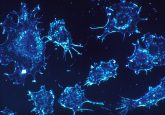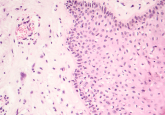New method finds potential avenues in the diagnosis of cancer

A small team of researchers from the University of Houston (UH; TX, USA) have developed a new method, by sneaking nanomaterials into and out of the cell, to retrieve cellular information without significantly disrupting the cell’s viability.
This work could prove crucial for the study of cellular signal pathways (a complex system of communication that coordinates cellular activities and cell actions), and could also provide new avenues for the diagnosis of cancer and other diseases.
Most current and alternative methods result in the dissolution of thousands of cells and therefore make it impossible to continue gaining information from each cell. To gain further information in the cellular signal pathways, extraction of the intracellular content is inevitable, and the use of conventional laboratories’ bulky materials causes major disruption of the cell membranes and terminates the time course of biological processes.
The team at UH have overcome this problem by using magnetized carbon nanotubes as the transporter, which can be snuck in and out of the cell under a magnetic force leaving insignificant damage to the cell’s viability. A polycarbonate filter was used as the collector and cells from a human embryonic kidney cancer cell were also used in the experiment.
The experiment and research was conducted by a small team of researchers at UH. The key researchers for this project were Zhifeng Ren, M.D Anderson Chair professor of physics, and principal investigator at the Center for Superconductivity at UH and lead author of the paper; Paul Chu, T.L.L. Temple Chair of Science and founding director of the Texas for Superconductivity; Xiaoliu Zhang, a cancer researcher with the UH Center for Nuclear Receptors and Cell Signaling; and Dong Cai, assistant professor of physics.
This study furthers Ren’s previous work, detailed in a 2005 paper in Nature Methods, which found that magnetized carbon nanotubes can deliver molecular payloads into the cell. This recent work has furthered that and has now established that the nanotubes are also able to move molecules out of cells by magnetically driving them through cell walls. This study also suggests further promise for nanoscience and nanoengineering in the medical field.
Source: UH researchers create new method to draw molecules from live cells.




